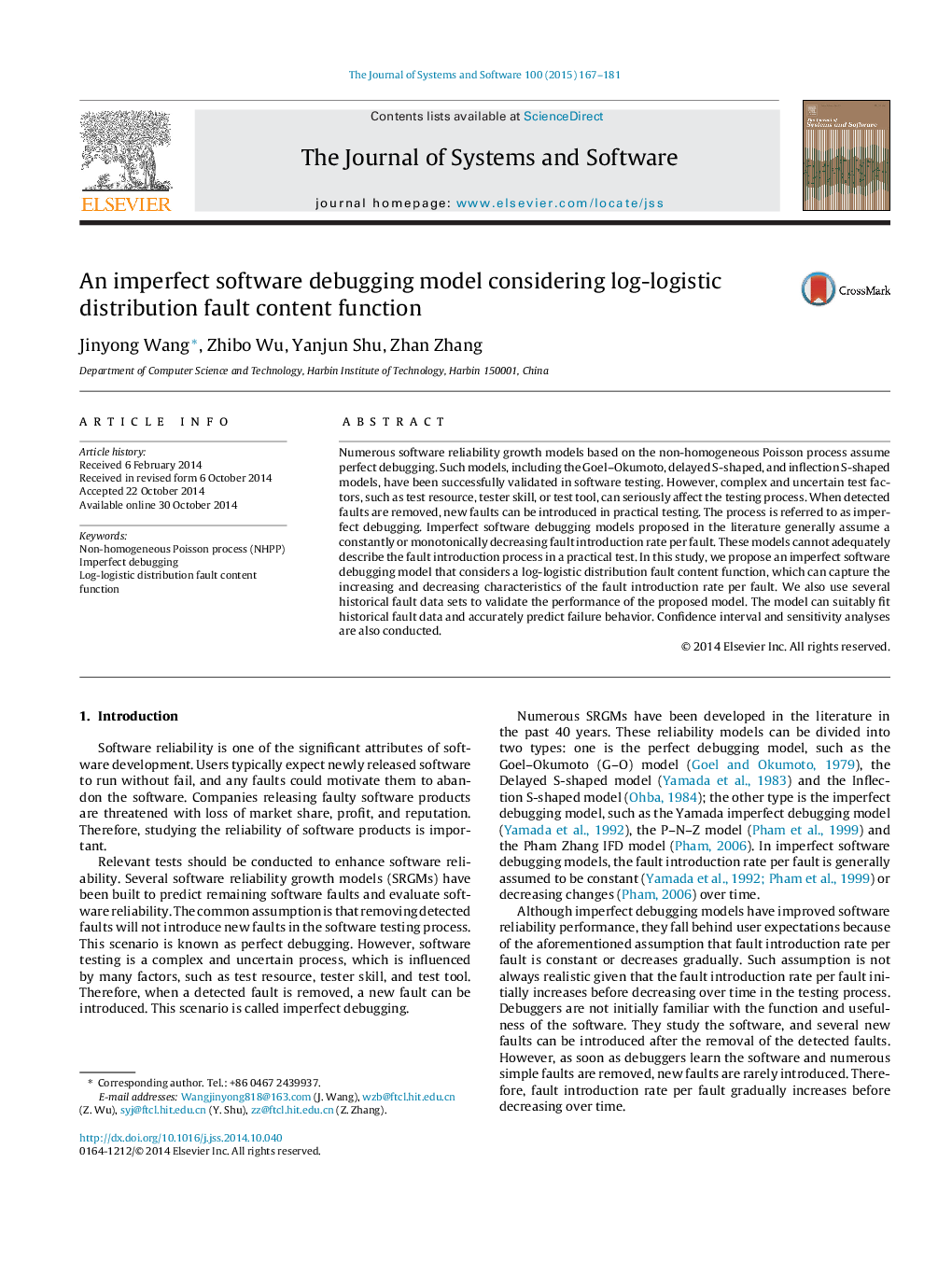| Article ID | Journal | Published Year | Pages | File Type |
|---|---|---|---|---|
| 458406 | Journal of Systems and Software | 2015 | 15 Pages |
•We use a log-logistic distribution to model fault introduction during debugging.•We propose a log-logistic distribution fault content function.•Fault introduction rate per fault exhibits increasing and decreasing characteristics.
Numerous software reliability growth models based on the non-homogeneous Poisson process assume perfect debugging. Such models, including the Goel–Okumoto, delayed S-shaped, and inflection S-shaped models, have been successfully validated in software testing. However, complex and uncertain test factors, such as test resource, tester skill, or test tool, can seriously affect the testing process. When detected faults are removed, new faults can be introduced in practical testing. The process is referred to as imperfect debugging. Imperfect software debugging models proposed in the literature generally assume a constantly or monotonically decreasing fault introduction rate per fault. These models cannot adequately describe the fault introduction process in a practical test. In this study, we propose an imperfect software debugging model that considers a log-logistic distribution fault content function, which can capture the increasing and decreasing characteristics of the fault introduction rate per fault. We also use several historical fault data sets to validate the performance of the proposed model. The model can suitably fit historical fault data and accurately predict failure behavior. Confidence interval and sensitivity analyses are also conducted.
